How to make 8-bit video game sounds in your DAW with a free synth
It's relatively easy to brew some authentic Nintendo console-esque sounds with modern software. Here's how to rustle up some chiptune seasoning
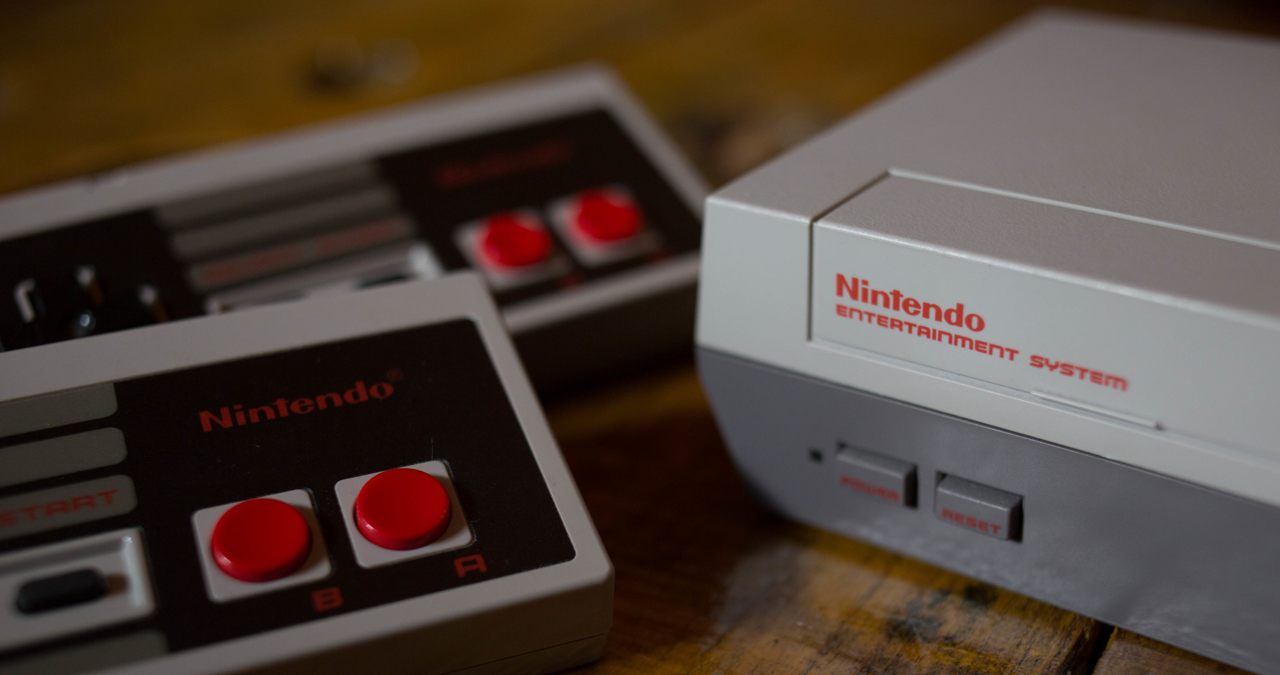
The chiptune music scene grew out of the original hardware, and to recreate those sounds and deliver authentic chiptune in your DAW you need some understanding of the original hardware and its limitations. If you’re interested in recreating 16-bit Mega Drive/Genesis style sounds then check our other tutorial using Inphonik’s RYM2612 instrument.
In this tutorial we turn our attention to the more lo-fi 8-bit sounds of the NES and Game Boy and look at how to recreate them in a modern DAW. To achieve this we’ll be using Vital, which is a free wavetable synth. However, you can use any wavetable synth or simply map samples in a sampler instrument.
((Make the following tutorial images larger by right clicking and selecting 'Open Image in New Tab')
How to make 8-bit video game sounds in your DAW with a free synth
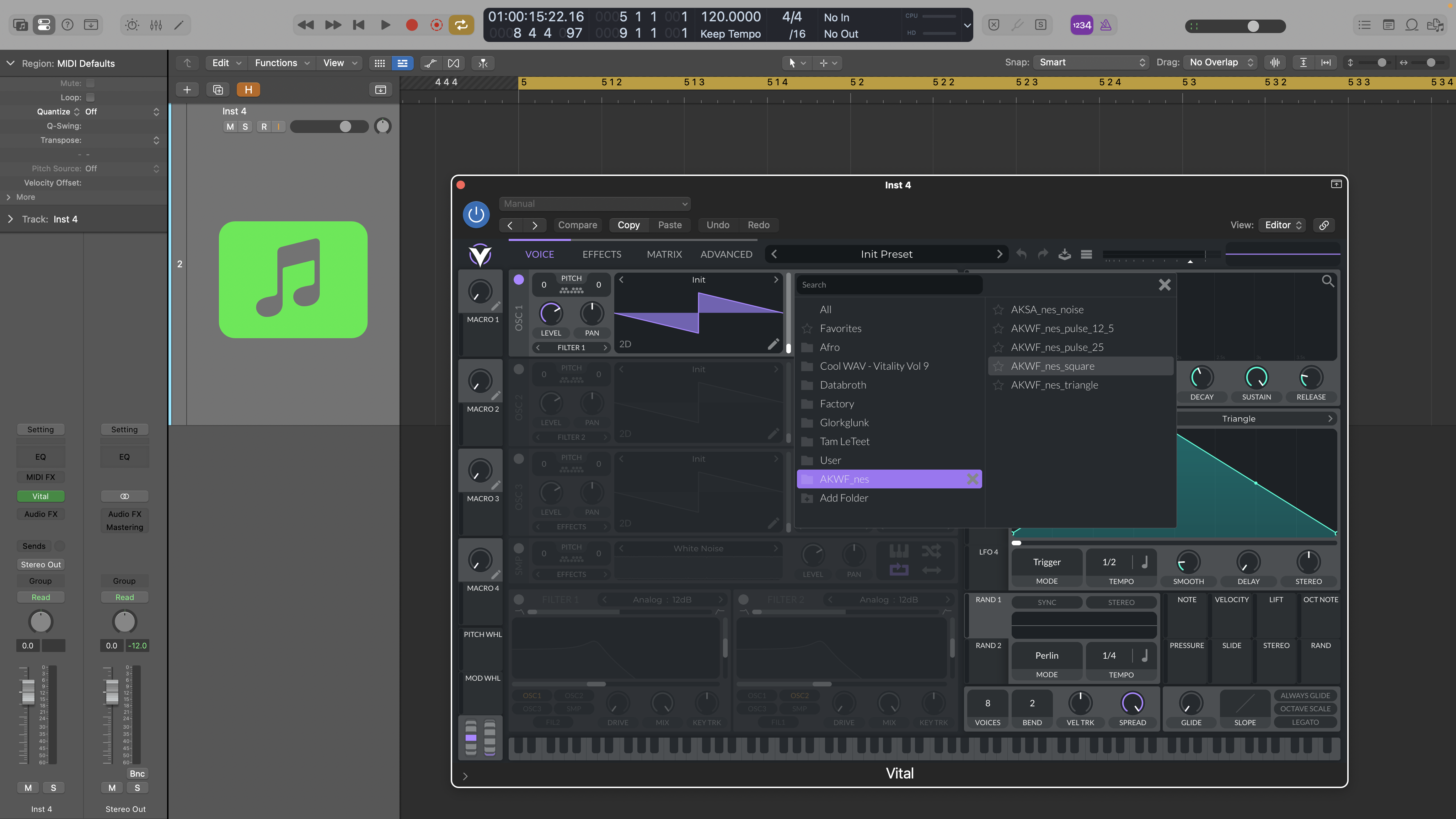
1: Classic gaming console synths are very simple, and usually include square and triangle waveform oscillators. Nothing unusual there, but the waveforms are often considerably compromised because of the low bit depth and this contributes to the sound. To recreate this we can grab some basic console waveform samples and load them into our sampler or wavetable synth. There are plenty freely available on the internet, so get searching.
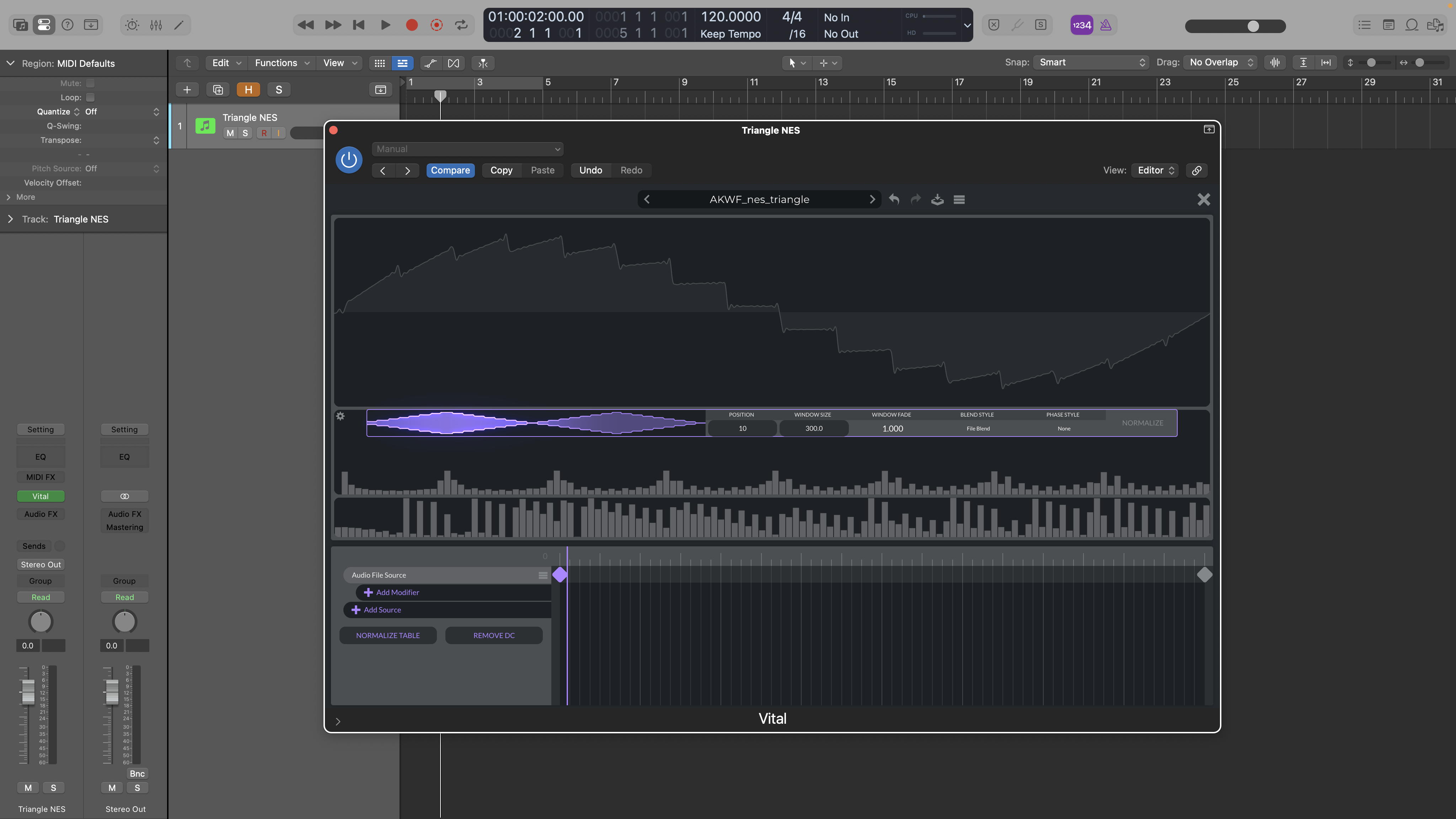
2: Here we’ve got a selection of NES waveforms. Let’s start with the triangle. We’ve loaded this into Vital using the Pitch Splice mode, which automatically sets the window to one cycle. We’ve then manually offset the waveform so that the cycle starts at the zero crossing point.
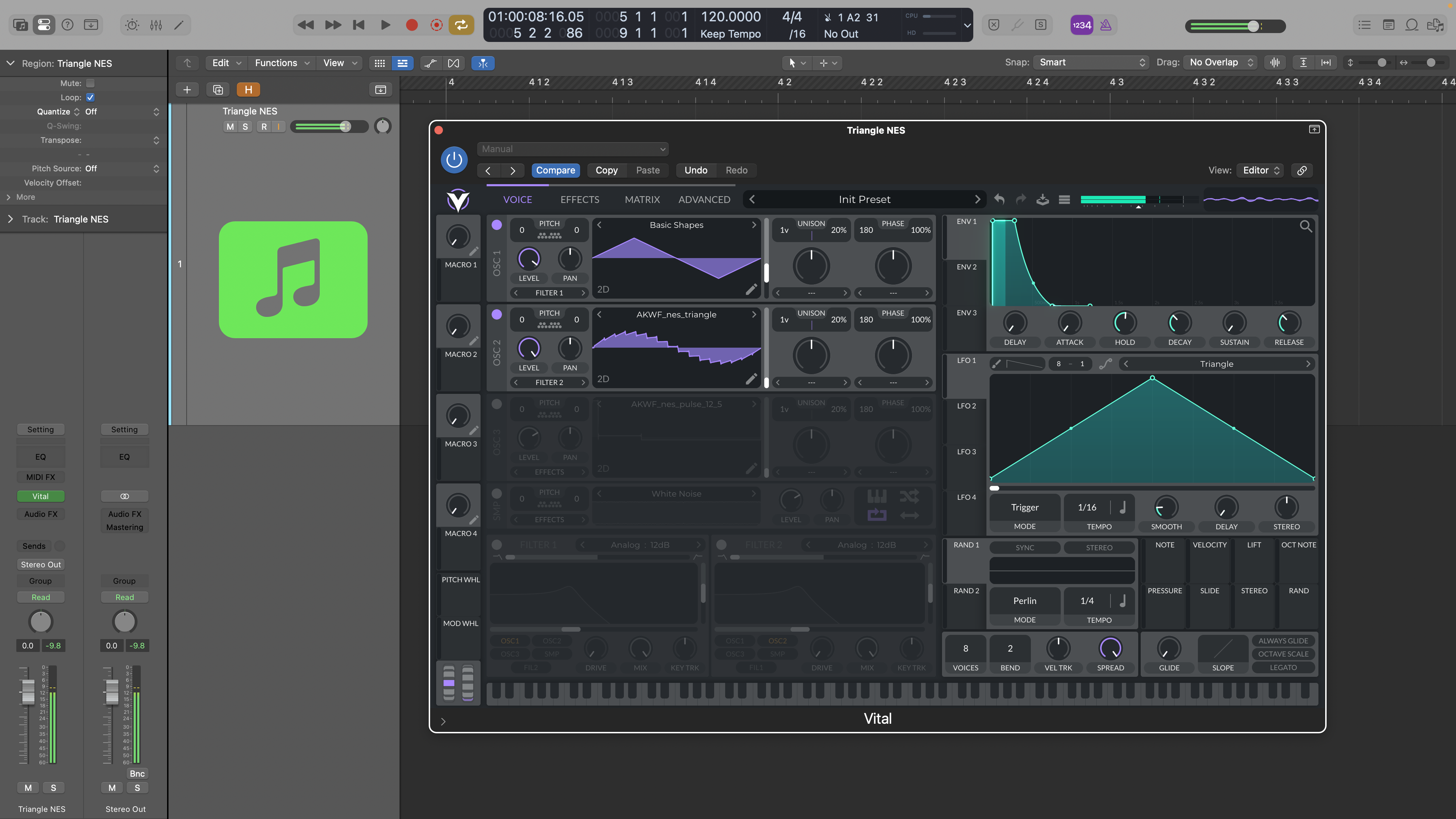
3. Straight away you can see the stepped character of the waveform and it also looks slightly lopsided. Play this and then a regular triangle wave for comparison and you’ll immediately hear the additional harmonics that the NES waveform has and hopefully recognise the distinctive chiptune sound.
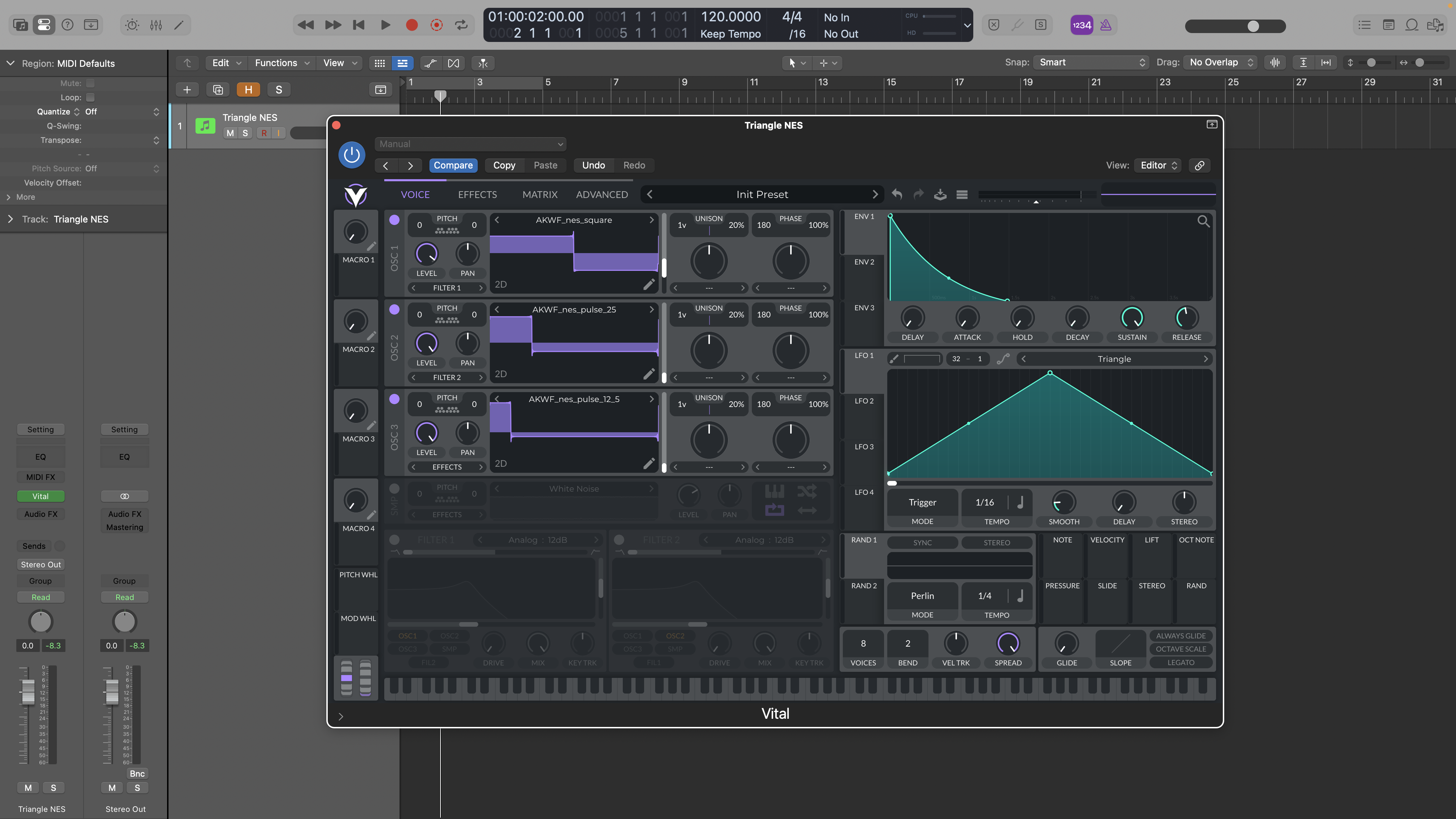
4. It’s worth trying out some other classic gaming console waveforms to familiarise yourself with the sounds available. Here we’ve loaded up the other waveform options from the NES, which are two pulse waves and the main square wave. As you can see, each is far from accurate and this is a key aspect of recreating these retro sounds.
Get the MusicRadar Newsletter
Want all the hottest music and gear news, reviews, deals, features and more, direct to your inbox? Sign up here.
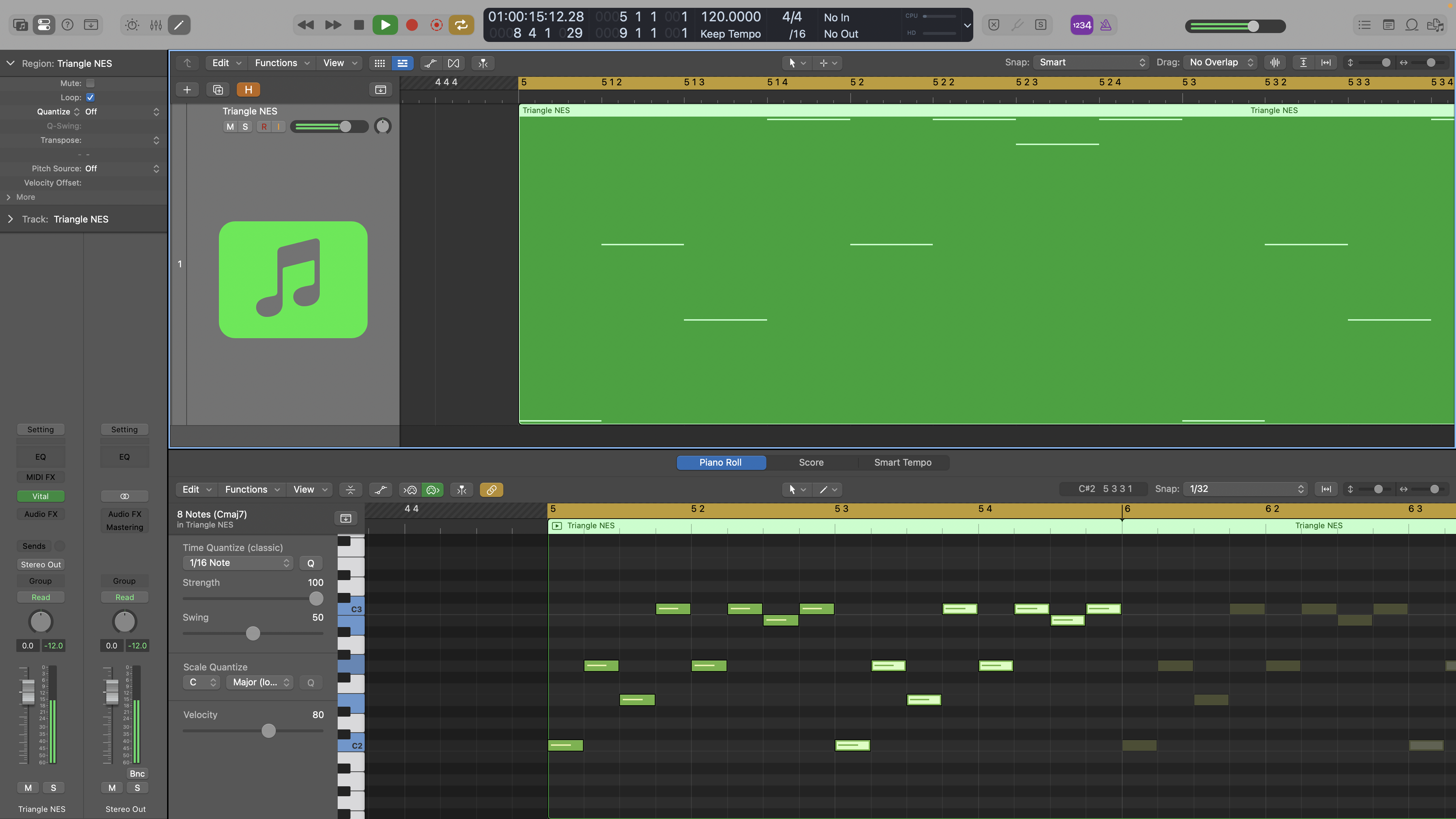
5. Armed with these core waves, there are various things we need to do to make our chiptune sounds even more authentic. Arpeggios are a big part of chiptune, either marking out the harmonic content or playing super fast effects. Let’s look at how to create a classic arp-based effect.
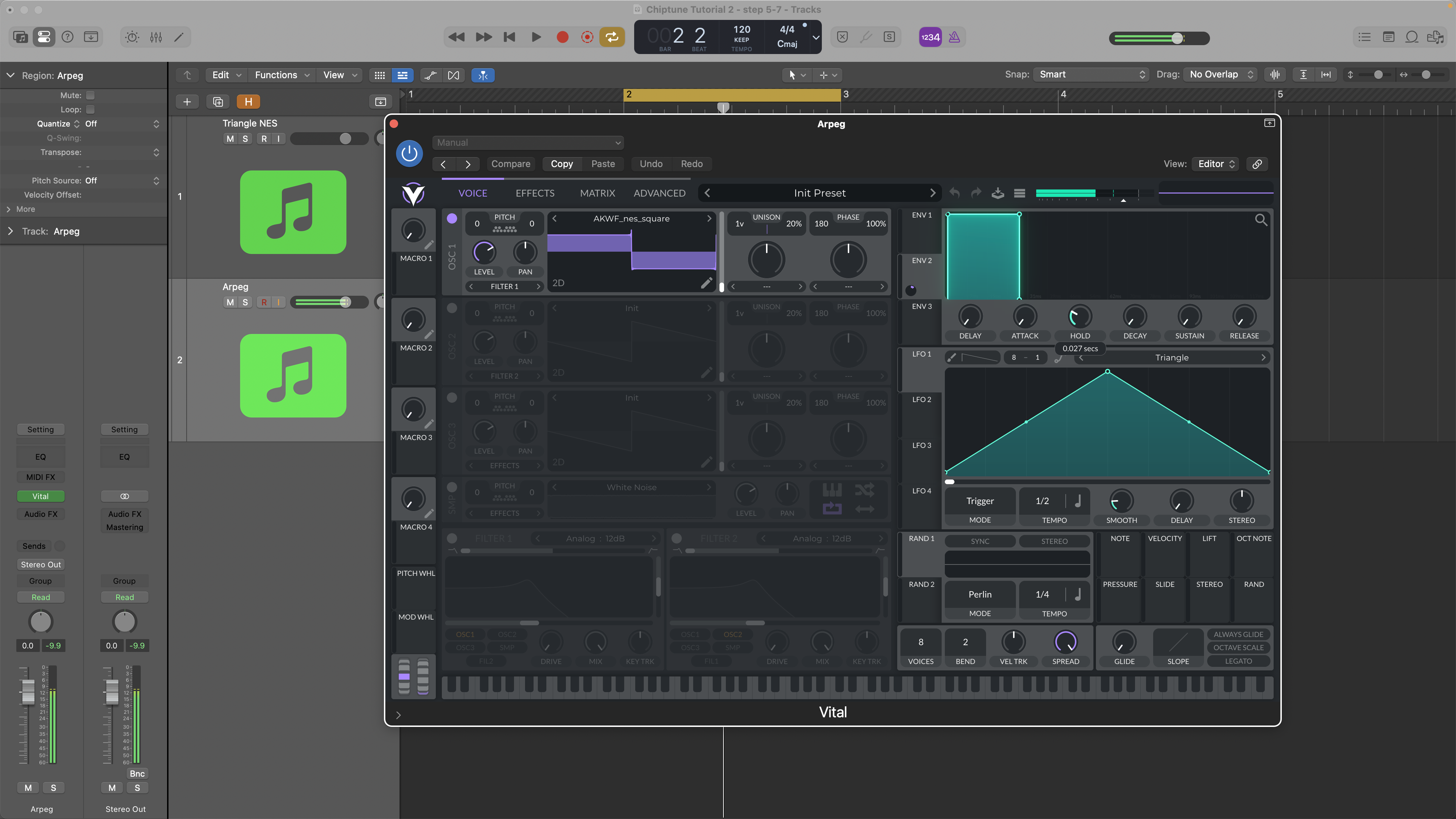
6. Here we’ve loaded up the NES square wave into Vital and set the amplitude envelope with zero sustain and used the decay time to create a short fast sound. We’ve also added a second envelope to briefly modulate the pitch up an octave when the note plays. The envelope hold time is set to about 25ms.
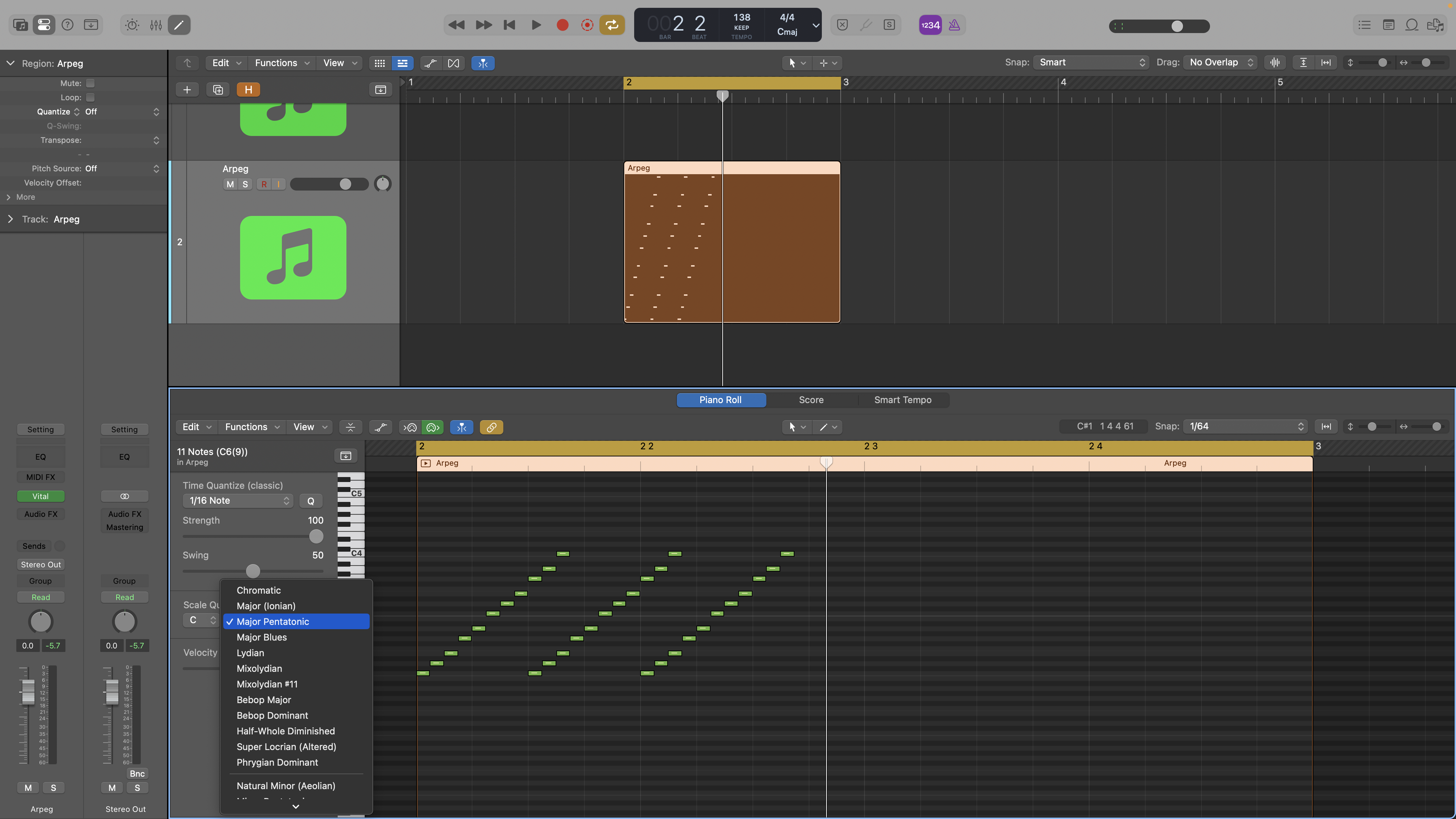
7. To finish up we’ve programmed a very fast pentatonic arpeggio pattern. This is quantized to 64ths and the pattern spans 2 octaves and is repeated 3 times. It creates a classic game style effect that is also very resource light as it’s only using 1 oscillator and 1 voice.
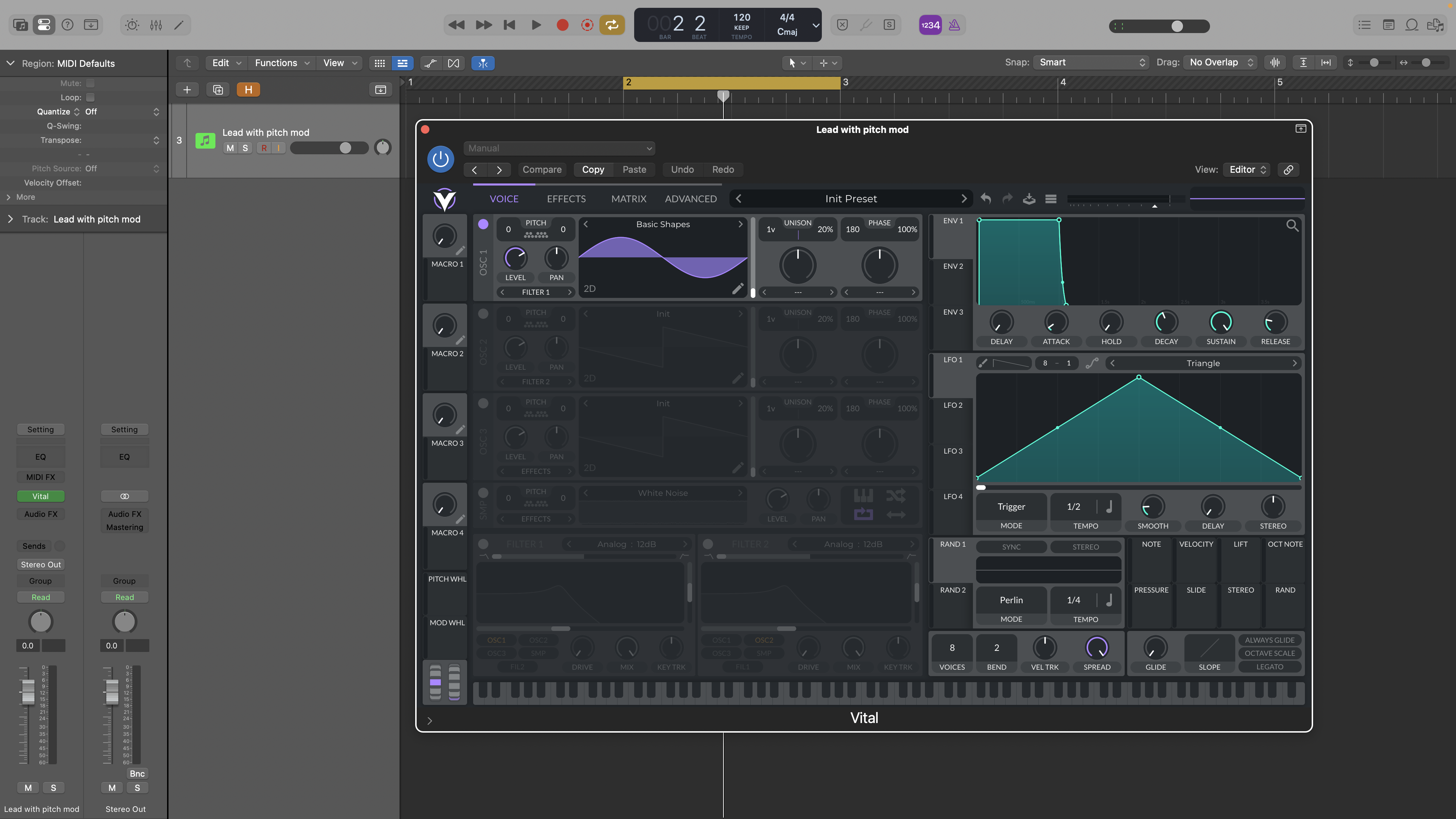
8. Chiptune lead sounds often feature pitch modulation, and this again is something which can be finessed in a retro fashion. Much like the audio waveforms, modulators, where used, are far from smooth. To achieve realistic pitch modulation and even amplitude envelopes it’s important to replicate their stepped shapes.
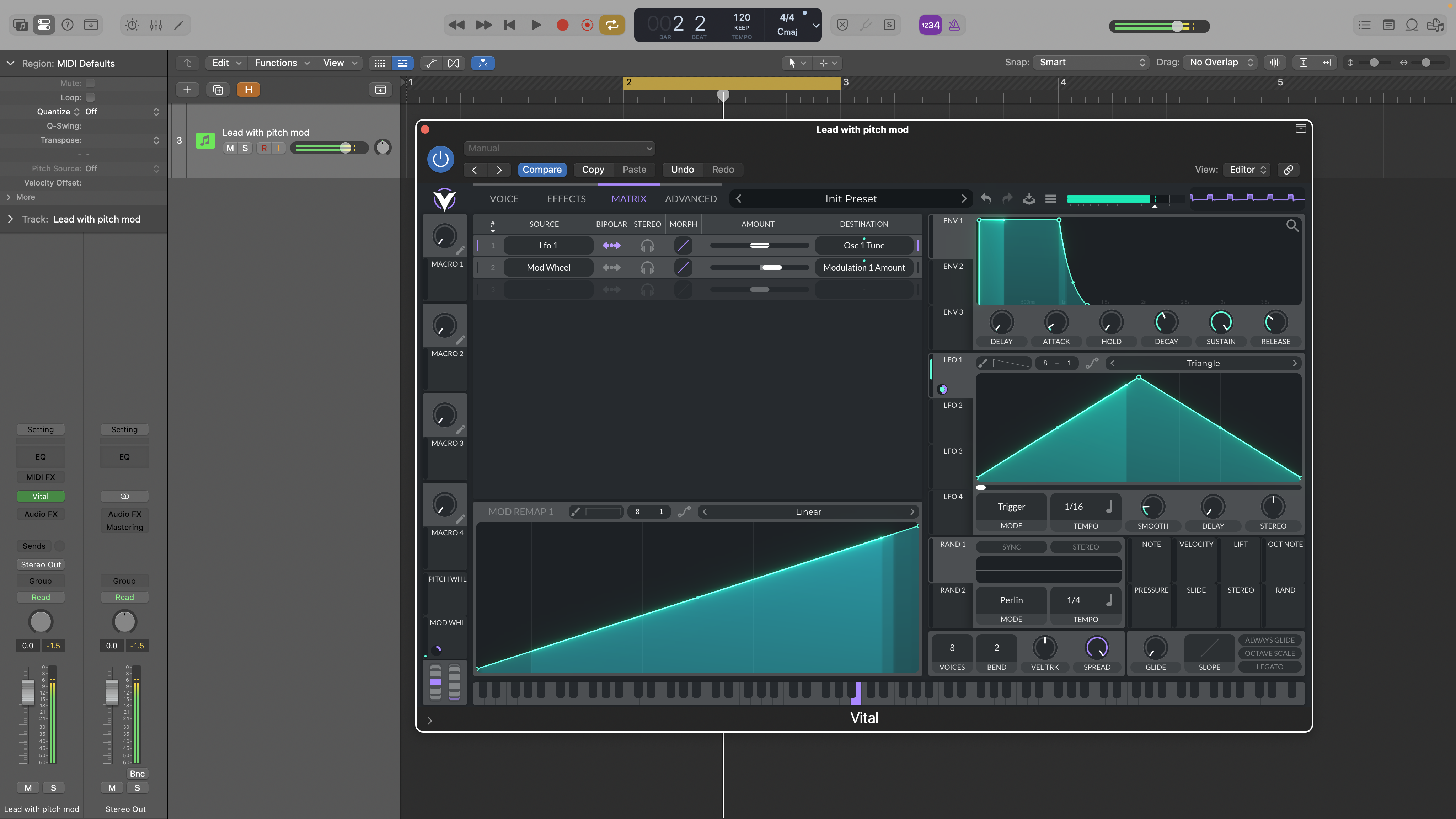
9. Here we have a lead sound based on our NES pulse wave. We’ve set up a bipolar LFO in Vital to control pitch modulation, with the modwheel also assigned to control the modulation depth. The standard LFO for this job would usually be a regular triangle shape.
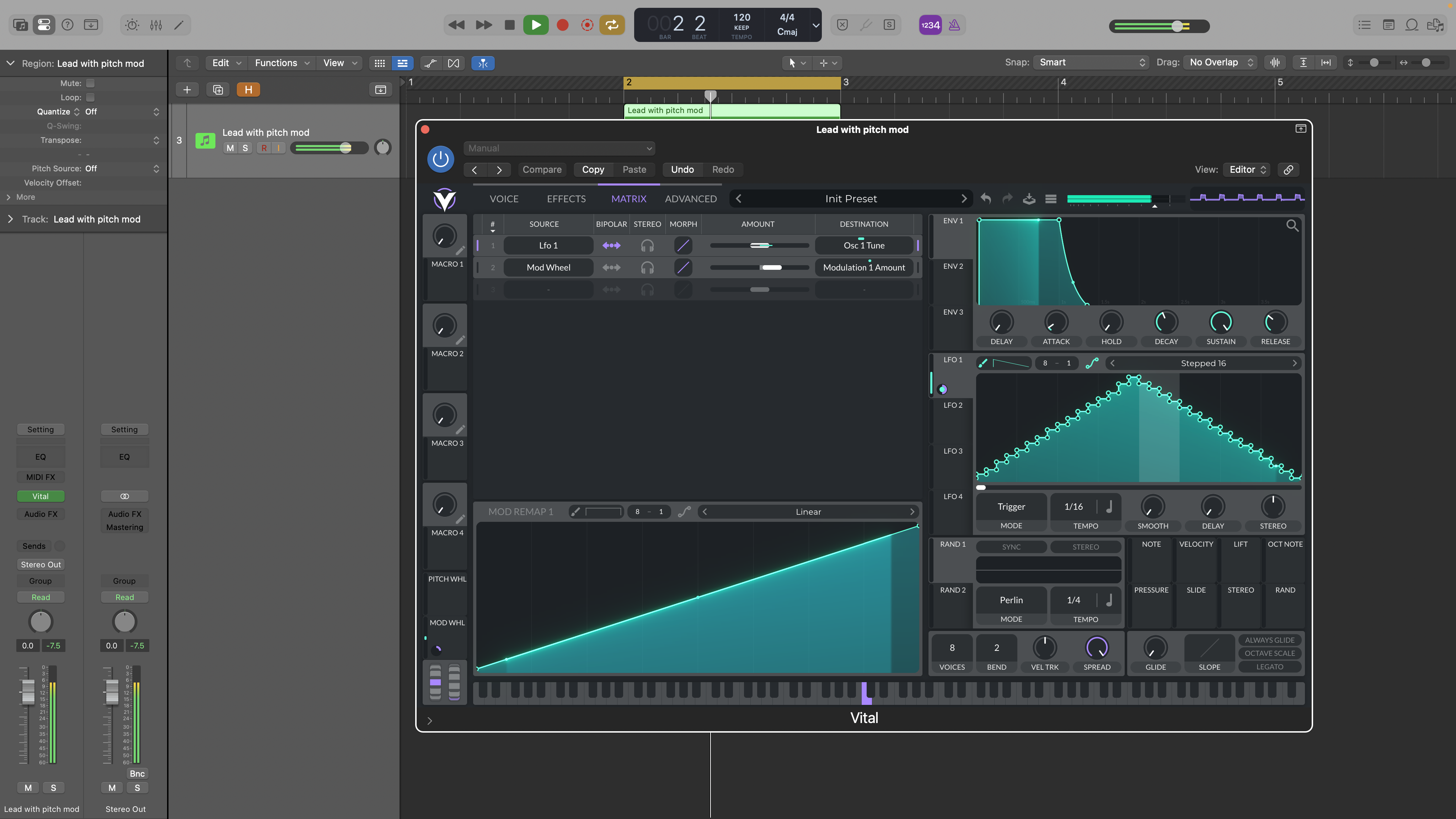
10. To replicate the classic game sound, the LFO needs to be stepped, so we’ve created our own stepped shape. You can see it’s still based on the triangle shape but has 16 steps, so when we apply modulation, the resultant pitch change is less smooth. The effect is subtle but more in keeping with the original game sound generation.
Jon is a London based platinum award winning mixer, producer, composer and club remixer with a diverse CV that spans dance, pop, rock and music for media. He’s also a long term contributor to MusicRadar's music technology tutorials and reviews. Whether working alone or collaborating he usually handles final mixdowns, so you’ll also find MusicRadar peppered with his handy mixing tips.










